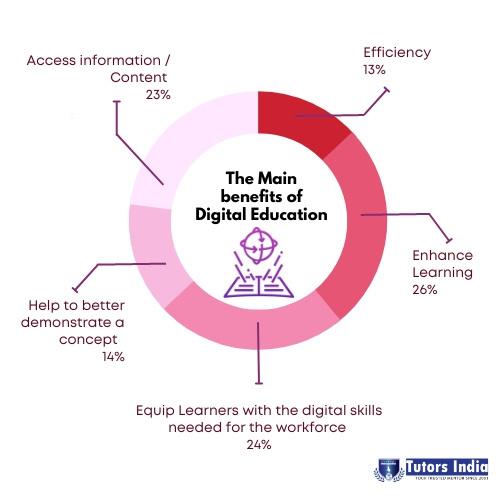
1 minute read
Figure1: Benefits of Digital education
from Categories, Technologies, and Instructional Methods for Digital Learning – Tutors India
by Tutors india
Digital e-learning is now a reality because of the Internet and AI innovation, which have revolutionized the field of education.
There are various kinds of digital learning strategies, including:
Advertisement
Adaptive Education

–Artificial intelligence is used to control and direct adaptive learning.
Based on her responses to questions, adaptive learning determines a student's degree of understanding, her areas of strength, and her areas of weakness.
Then, it offers a systematic delivery of simple knowledge for the students to comprehend (Sailer et al., 2021).
Gamification and Badging –A student is given digital badges for her academic performance in gamification, a motivated learning strategy.
Students remain motivated to learn because to the incentive of group badges.
E-Textbook –Traditional textbooks have been modernized and updated as e-textbooks. According to numerous research studies by universities and other educational institutions, E-textbooks are expected to overtake traditional books in the near future.

However, e-textbooks are preferable since they are less expensive, convenient to use and handle, non-perishable, and simple to update to reflect new circumstances.
Blended Learning –Combining the best elements of traditional and online learning is known as blended learning. Both in-person and online classes are used to train students in this situation.
Online Learning –With the Internet, online education allows learners to expand their knowledge. For example, an online learner can access on-demand lectures; most lessons are pre-recorded (Nambiar, 2020).






